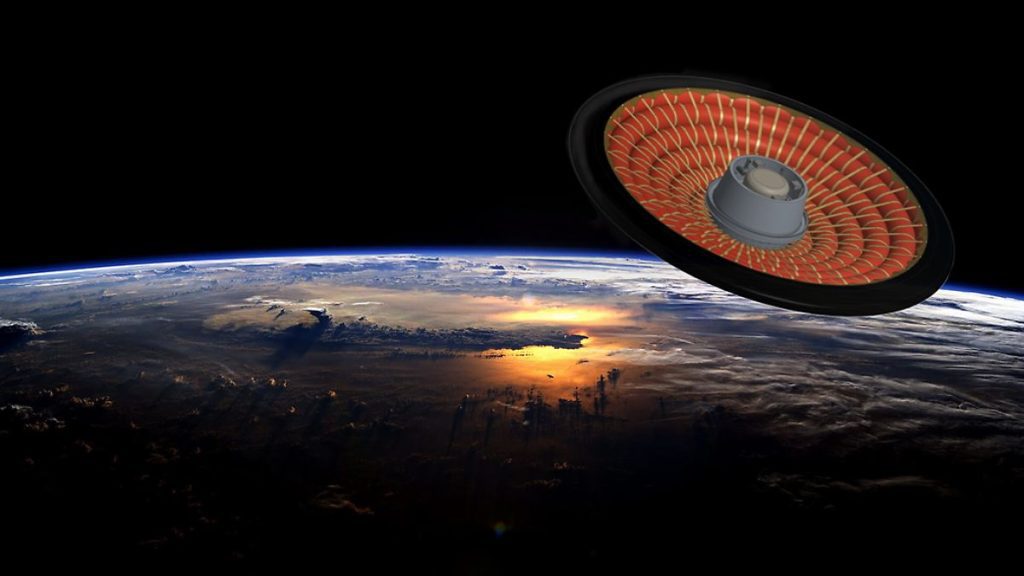thin air solution
NASA is testing an inflatable heat shield for landing on Mars
10/12/2022 4:34 PM
Landing a robot on Mars is one thing – a heavy manned space capsule is another. Because for a quiet landing, you must brake hard. But the atmosphere of Mars is very thin, which has limited the possibilities so far. A new technology aims to change that.
NASA wants to test an inflatable heat shield that makes it possible to land heavy payloads on planets with atmospheres in the future. The first test under real conditions is scheduled over the Pacific Ocean in November: the heat shield will be launched into orbit with a rocket, where it will be inflated to finally land on Earth on its own. If the technology proves valuable, manned landing capsules could land on the surface of Mars in the future.
If you want to land on another planet, the spacecraft must be slowed down from its very high speed. The most effective solution to this is to use the resistance of the planet’s atmosphere. But there is a problem with Mars: its atmosphere is much thinner than that of the Earth. “The atmosphere is thick enough to cause some clouds, but too thin to slow the spacecraft as fast as Earth’s atmosphere can,” NASA wrote.
The diameter of the heat shields previously used on Mars missions such as the Perseverance Chariot was limited by the size of the rocket used. While it was suitable for robotic vehicles, it was too small to slow down the really heavy loads and enough manned capsules to land it safely on Mars.
A new inflatable heat shield could be the answer. Due to its larger diameter, it also increases air resistance. The spacecraft can decelerate earlier and at a higher altitude, and it also heats up less. The shield is made of synthetic fibers, which NASA says is 15 times stronger than steel and can withstand temperatures of over 1,600 degrees. A shield with a diameter of six meters will be used in the upcoming test. This should be bigger for a Mars mission.
Can you imagine landing on Saturn’s moon
An inflatable heat shield could allow heavy loads to quietly land not only on Mars, but also on other celestial bodies with an atmosphere: candidates include Saturn’s moon Titan and Venus.
Using the heat shield, larger masses could also be transported back to Earth from the ISS in the future. There are also plans to use this technology to return missile parts to Earth after launch from low orbit in order to save costs. Billionaire Elon Musk’s SpaceX also relies on reusable rocket parts. For this purpose, the stages of the rocket are again slowed down by the thrust of their own engines.

“Total coffee aficionado. Travel buff. Music ninja. Bacon nerd. Beeraholic.”







More Stories
Researchers detect extremely high-energy gamma rays
Anxiety disorders in old age increase the risk of dementia
Researchers are particularly fascinated by these exoplanets.